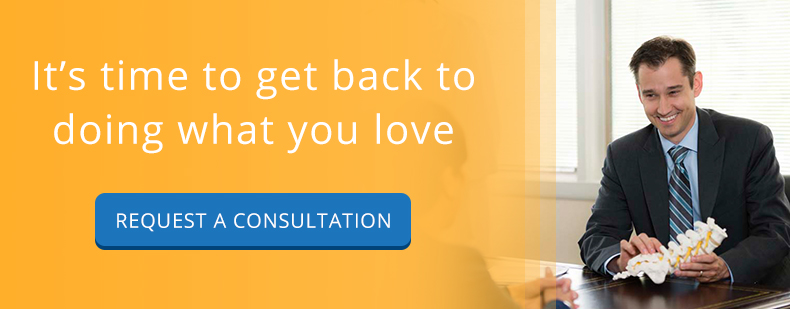One of the first questions patients have when deciding to undergo an anterior cervical discectomy and fusion is what the road to recovery will look like. This is understandable — it is definitely helpful to know what to expect during recovery so you can feel comfortable about what it takes to get your spine back to full health. When you’re aware of the typical timeline for anterior cervical discectomy and fusion recovery, as well as the factors that can affect that timeline, you can more easily prepare to return to your active lifestyle.
Recovery Overview
When performing the anterior cervical discectomy and fusion, your surgeon will access your spine from the front of your neck and insert a bone graft or other structural support to stabilize the affected area. To ensure your safety and comfort, you will be under anesthesia throughout the entire procedure. Once the operation is finished, you will wake up in a postoperative recovery area.
Here, doctors and nurses will take precautions to make sure that your pain is manageable and that you are as comfortable as possible.
The expected length of a hospital stay after an anterior cervical discectomy and fusion usually overnight for one or two level procedures. Three or four level fusion may require additional days. In some cases, however, patients go home the same day. The hospital team will monitor several metrics to determine the best time to discharge you. These metrics include your ability to eat and walk, your level of pain, and the severity of your preexisting spine condition.
Once you leave the hospital, recovery generally lasts three to six months. Many patients are back to their preoperative level of activity in less than three months, but it all depends on the speed of spinal fusion — your spine may not be considered fully healed until the bone graft has successfully fused to its surroundings, which can take six-twelve months. Your doctor may regularly take X-rays of your spine to monitor the progress of the bone fusion.
During the first four to six weeks, you may be prescribed a neck brace. This not only ensures that your spine aligns properly, but it also facilitates awareness of your posture. A neck brace can serve as a reminder that it’s crucial to avoid excessive head movement so your spine can heal properly.
To aid the healing process, your doctor may also recommend neck stretches and exercises to help restore strength and mobility. Above all else, it’s important to carefully follow your doctor’s advice in order to maximize the outcome of anterior cervical discectomy and fusion. Your physician will monitor your progress and provide guidance as you recover.
Other Important Factors
The above timeline is a general guide for the typical patient’s recovery from anterior cervical discectomy and fusion. But, take note that there are a number of factors that can influence your individual experience. These include:
Your Age
In general, younger patients heal more quickly and return to activity sooner than older people. This is because there are many processes in the body that simply slow with age. For example, younger people produce more collagen, a protein found in connective tissue that helps the body grow and regenerate. Also, younger people have more COX-2, which is crucial for bone healing. Recovery from anterior cervical discectomy and fusion depends on how quickly fusion occurs, so COX-2 can play an important role.
On the other hand, younger patients may enjoy a higher preoperative level of activity. This means that their standard for a full recovery may be higher and therefore cause the recovery itself to take longer.
Your Overall Health
Overall health is one of the most important determinants of post-operative success. Factors such as weight, smoking habits and diet can all influence the healing process and hinder chances of a successful recovery. Those in better overall physical condition are usually able to bounce back more quickly from an anterior cervical discectomy and fusion, so it’s advisable to take these health metrics into consideration well in advance of your operation. Talk with your doctor if you have any questions or concerns about your health as your operation date approaches.
The Severity of Your Condition
A spinal pathology of greater severity will typically lead to a longer recovery timeline. For example, a double discectomy and fusion puts more stress on your body than a single discectomy and fusion, so it will necessitate a more gradual return to activity. Consult with your doctor to better understand your condition and how your individual recovery time may vary.
Final Thoughts
If you have back or leg pain that has impeded your active lifestyle, you and your doctor may decide that an anterior cervical discectomy and fusion is the best way forward. This is an effective procedure, but keep in mind that recovery is an active process. You may find full recovery a challenge, but by researching the process and regularly consulting with your doctor, it is a challenge you can certainly overcome.


